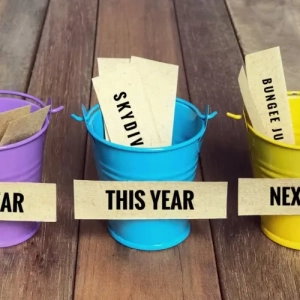How to Get Everything You Ever Wanted
How to Get Everything You Ever Wanted
What do you want from life
I asked some of my friends this recently and their answers were largely the same: to work less; to see the world; to retire early; to win the lottery.
In reality, we may all want different things, but think what those answers have in common.
They all need money. Or involve winning money. Either way, money is involved.
As pinning all your hopes on the lottery isn’t the wisest choice, I’m going to focus on another way you can achieve everything your heart desires. And luckily for you, it involves just a few simple steps.
Step one: List your goals
You’ve already gone some way to answering this by tackling my initial question.
Now I need you to be specific. Set your goals, really visualise your end game. Do you want to buy a house? Pay your mortgage off early? Travel the world?
Making a list of real, tangible things that will make you happy will make it easier to build a plan to achieve each thing on the list…
Step 2: Set your timeframe
Next up, put a deadline against each thing on your list so you can figure out how long you you’ve got to work your savings magic. This is crucial to setting yourself on the right path.
Let’s say you’re 30-years-old. The main things on your list are to buy a house, have the mortgage paid off within 30 years and retire by the time you’re 65.
Where do you start?
The key is to prioritise. To retire at 65 you’ll want to get your mortgage paid off first. To do that within 30-years you’ll need to get on the property ladder within the next five years, which gives you a clear priority and a deadline to work towards.
That’s not to say you ignore your other goals completely. But with a plan in place a financial advisor can help you figure out the best way to divvy up your disposable income to match your priorities.
Which brings us, conveniently, to the next stage in my masterplan…
Step 3: Split your piggy banks
Giving each goal a separate account is one of the easiest ways to manage your pot according to the timescales you’ve set. It also helps you judge your progress so you don’t get demotivated or distracted.
It also means your financial advisor can help you balance out the risk levels, so you can maximise the returns.
For instance, anything you’re going to do in the next few years is best suited to a low risk investment vehicle, such as an ISA. You need to be able to get your hands on it when the big day comes.
But for retirement nest eggs you should have time to ride out fluctuations in the market, so a higher-risk-higher-reward investment strategy could be the winner.
Again, talking through your plans, goals and priorities with an expert will make this kind of decision a cinch. After all, it’s our job to know the market. It’s yours to make the plans.
But wait, don’t plans change? They certainly do. Which leads us neatly to my final step:
Step 4: Review and Redo
Life is unpredictable and things can crop up that derail even the best-laid life plans. So it’s important that you revisit your dreams and tweak your strategy as you go along.
Talking with your financial advisor every six to 12 months is vital. It means you’re always on the same page, and makes sure investment or savings pot is relevant and on-track.
Start now and before you know it, you’ll be much closer to getting exactly what you want from life.
To let me help you make a plan for getting what you want from life please contact me for a free initial consultation.
